On May 18, it was learned from Porsche that the third version of the new 911 series was announced after the hardtop sports car and the convertible sports car. There are two four-wheel drive models of 911 Targa 4 and 911 Targa 4S for customers to choose from. At present, the two new cars have started the pre-sale work in the Chinese market. The manufacturer’s suggested retail price of 911 Targa 4 is 1.499 million yuan, and the 911 Targa 4S is 1.695 million yuan.
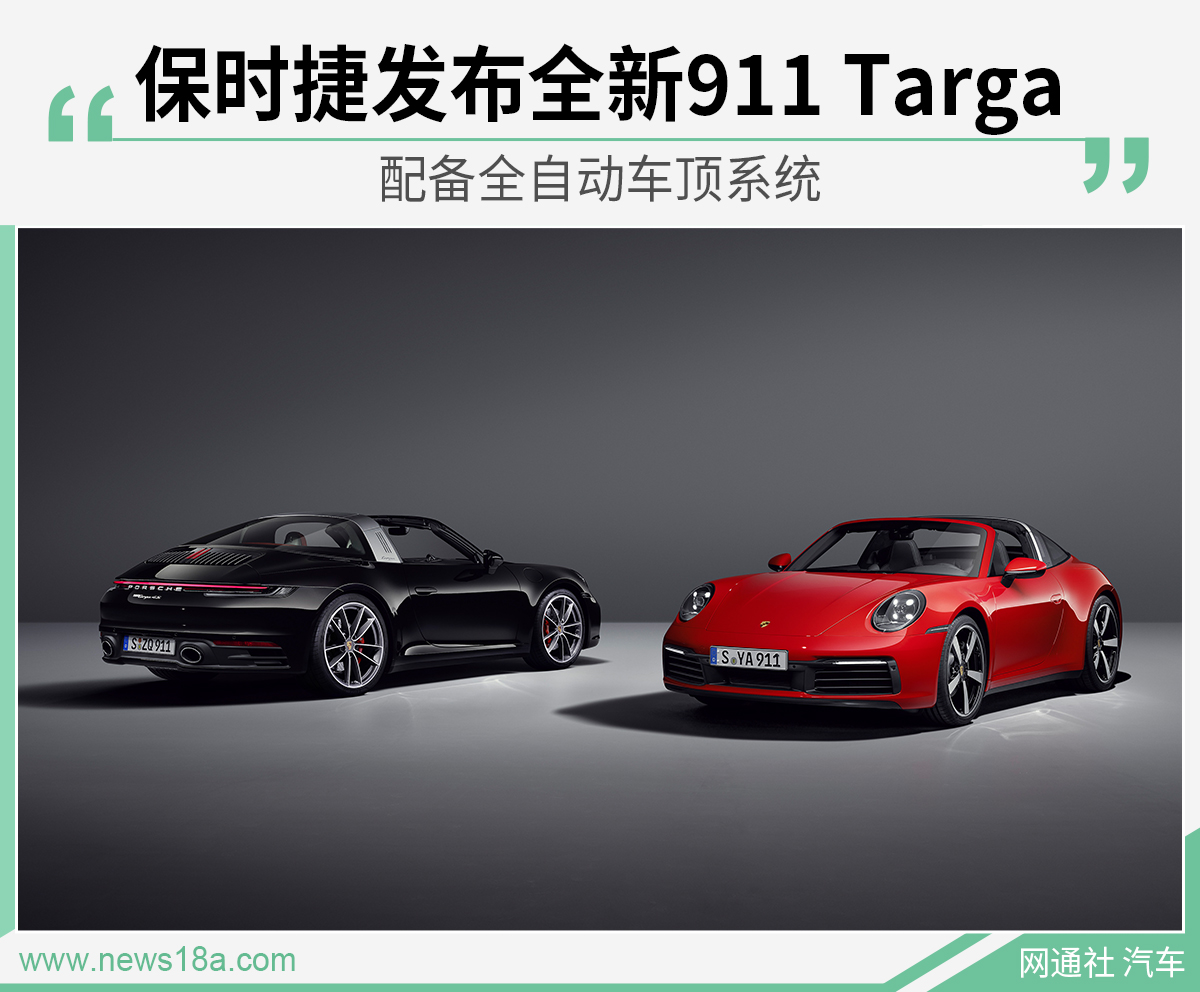


The exterior of the new 911 Targa is closest to that of the new 911 Carrera 4 Cabriolet, with almost identical technology and body below the window line. The wide rear, Targa roll frame and wraparound rear windows give the new car a highly dynamic appearance and low styling. The front of the body is 45mm wider than the previous model, and the more prominent wheel arches make this change even more vivid. The front cover, which is recessed between the LED headlights, pays homage to the design of the original 911 with its coordinated silhouette.

The 911 Targa 4 is equipped with 235/40 ZR front tires and 295/35 ZR rear tires with 19-inch and 20-inch light alloy wheels respectively, with 330mm brake discs on the front and rear wheels and monocoque calipers with black four-piston. The 911 Targa 4S is equipped with 245/35 ZR front tires and 305/30 ZR rear tires with 20-inch and 21-inch light alloy wheels respectively, with 350 mm brake discs on the front and rear wheels, and red six-piston brake calipers on the front wheels and red four-piston calipers on the rear wheels.
The roof system of the new 911 Targa has been further developed and, like its predecessor, includes two movable sections: a soft top and a glass rear window. Two one-piece magnesium flat pieces ensure that the soft top is always tensioned and soundproof and insulated. The heated glass rear window is made of weight-optimized laminated safety glass.
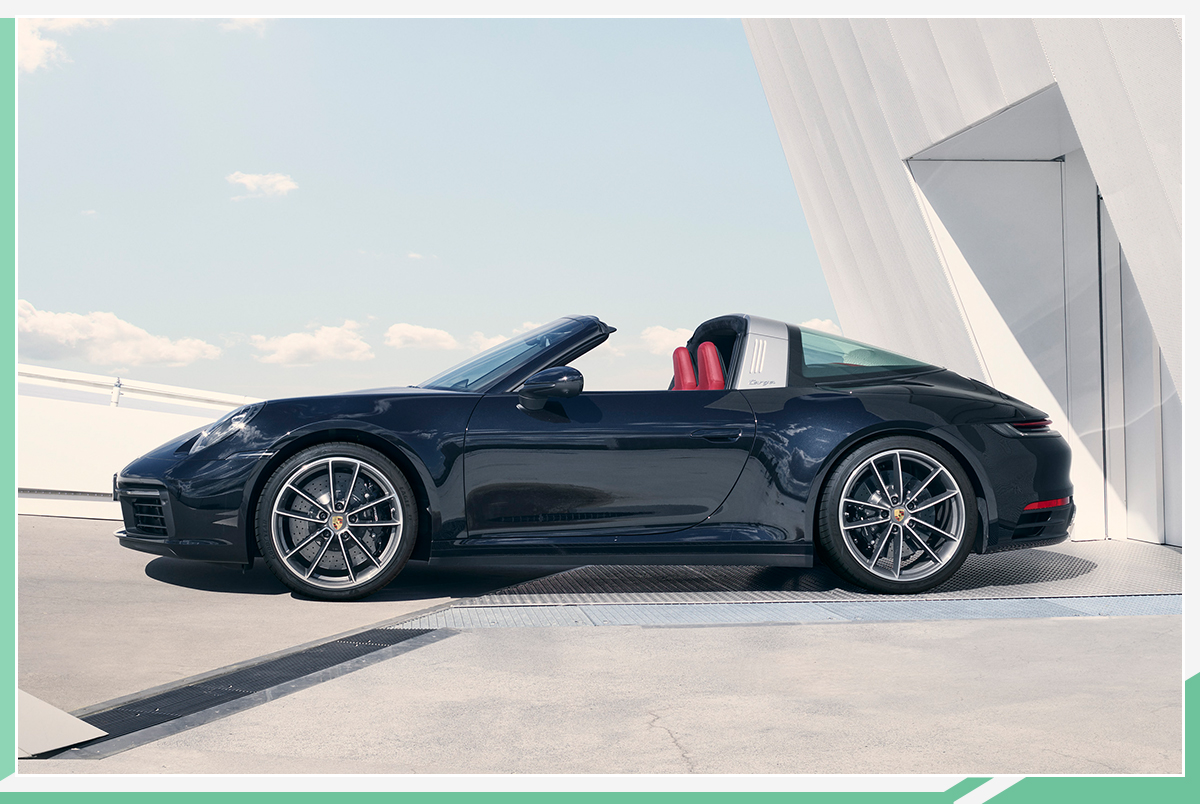
Thanks to the more powerful electric actuators, the roof is able to open or close fully automatically in just 19 seconds. With the push of a button, the glass rear window is raised and the roof opens. The windows attached to the movable canopy cover are then tilted and moved backward. At the same time, the two wings in the Targa roll cage open to exert the aerodynamic properties of the soft top. During the opening process, after the soft top is unlocked and folded rearward in a zigzag and tucked into the rear seats, the wings and rear window in the Targa roll cage close again.
When the roof is open, the driver can choose to manually lift the windshield integrated into the frame of the front ventilation trim, thus significantly reducing turbulence in the car, with the best effect in the speed range of 50km/h – 145km/h. To prevent damage, the standard parking assist system monitors the rear area of the car when the roof is open or closed. During this process, the rear window rotates outward to the outside of the rear of the car. If the system detects an obstacle such as a wall or other vehicle in an area of about 50 cm behind the car, it cancels the operation, thus preventing a collision.
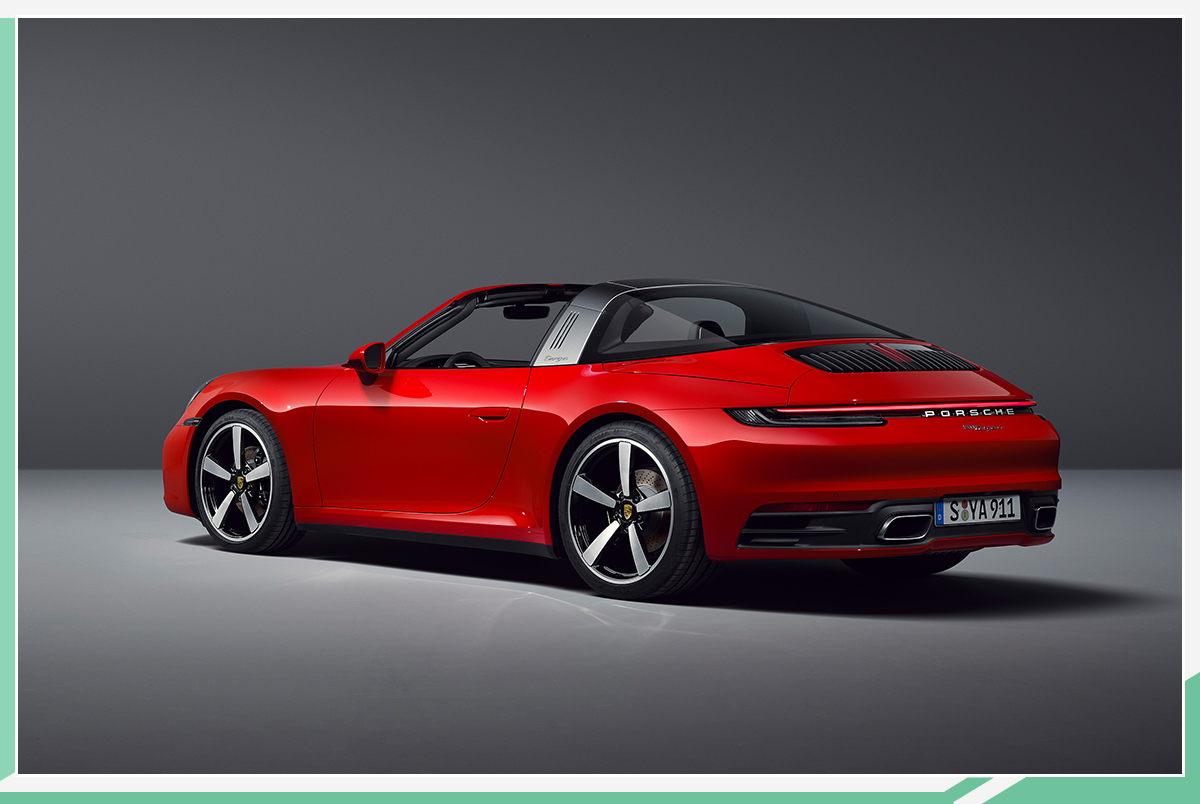
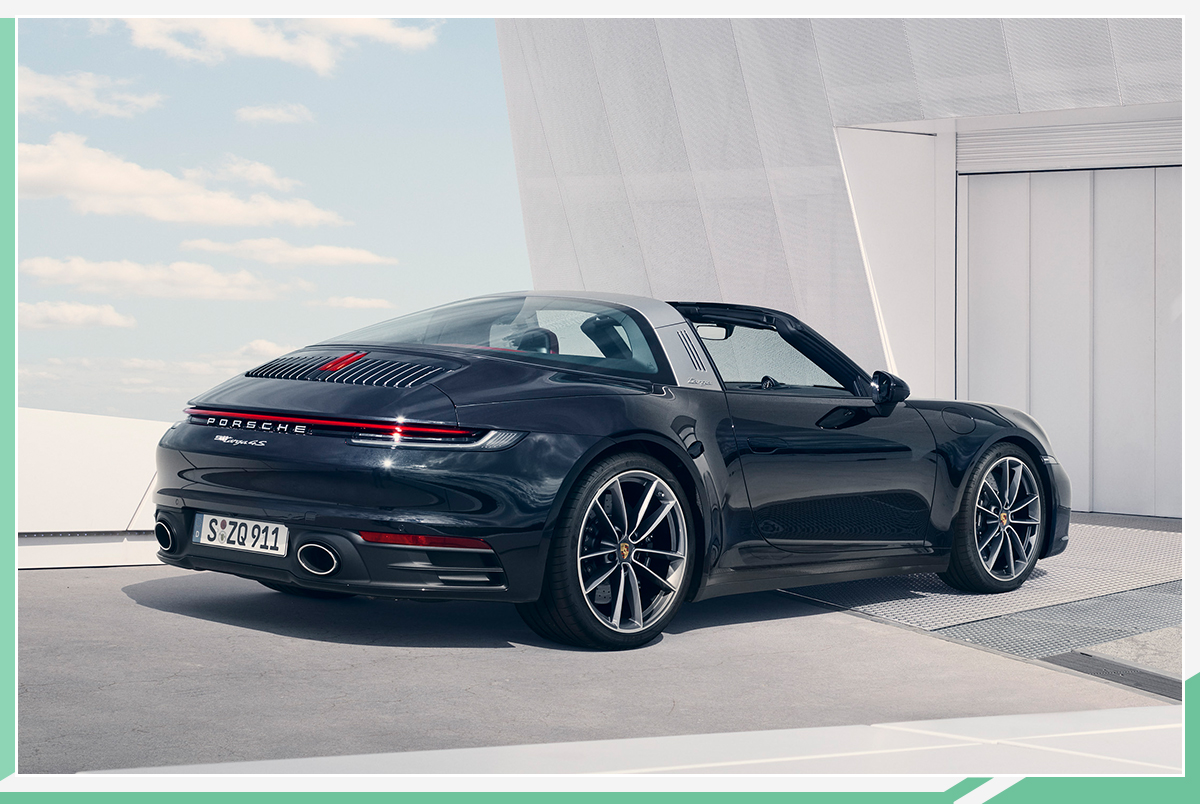
The rear of the all-new 911 Targa features a widened, continuously adjustable stretch rear spoiler and elegant light strips that blend seamlessly with the body. The entire body shell is now made entirely of aluminium, with the exception of the front and rear. The new car features an enhanced active aerodynamic design, with the active element control strategy of the rear spoiler and cooling air deflectors altered according to the speed of travel and driving mode.
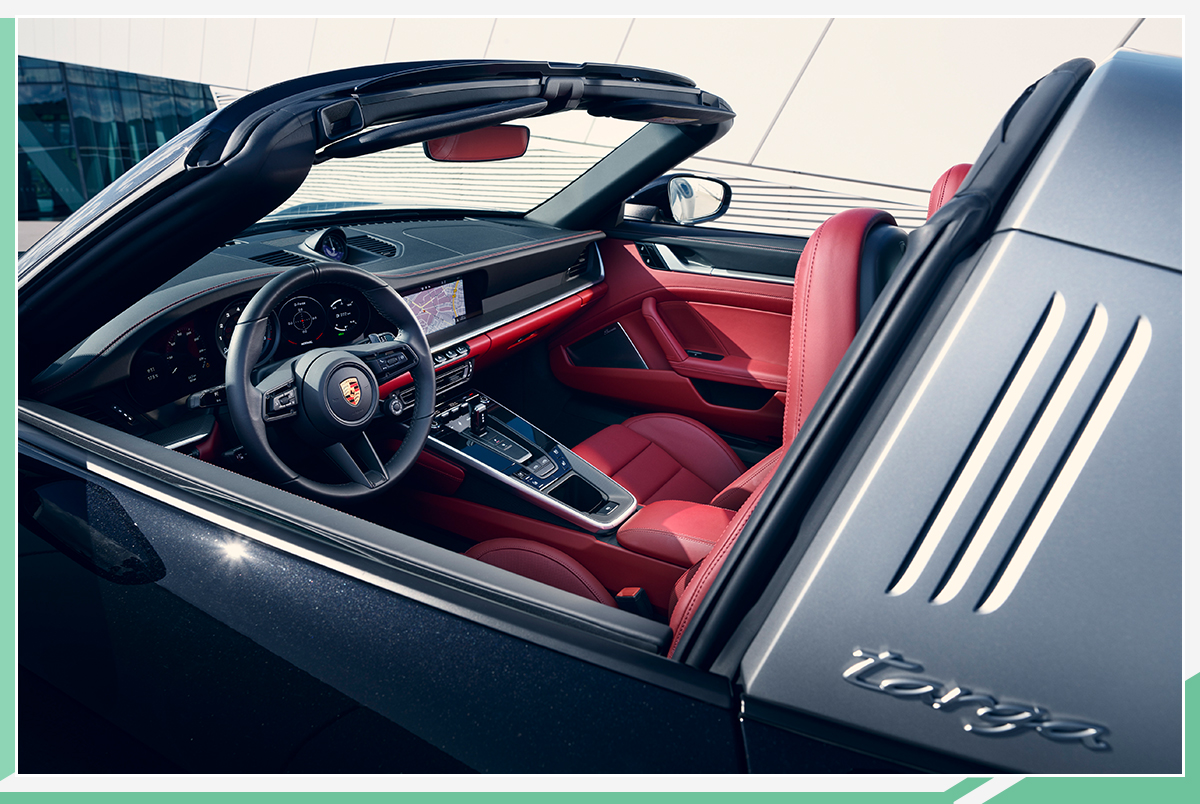
The new 911 Targa is available with an optional 930 leather component in the style of the original Porsche 911 Turbo (Type 930). This two-tone interior was designed by Porsche Exclusive Manufaktur in collaboration with design experts at the R & D Center in Weissach, and includes front/rear quilted seat centerpieces, quilted door panels, and other rich leather trims from Porsche Exclusive Manufaktur.
The two-tone interior is available in Bordeaux Red/Matte Grey, Black/Slate Grey, Slate Grey/Icelandic Green, and Graphite Blue/Mojave Beige. In addition, the center console storage box lid is stamped with Porsche Exclusive Manufaktur letters, and the headrest is stamped with the Porsche coat of arms. The new car comes standard with Porsche Connect Plus and a SIM card with integrated LTE network capabilities.
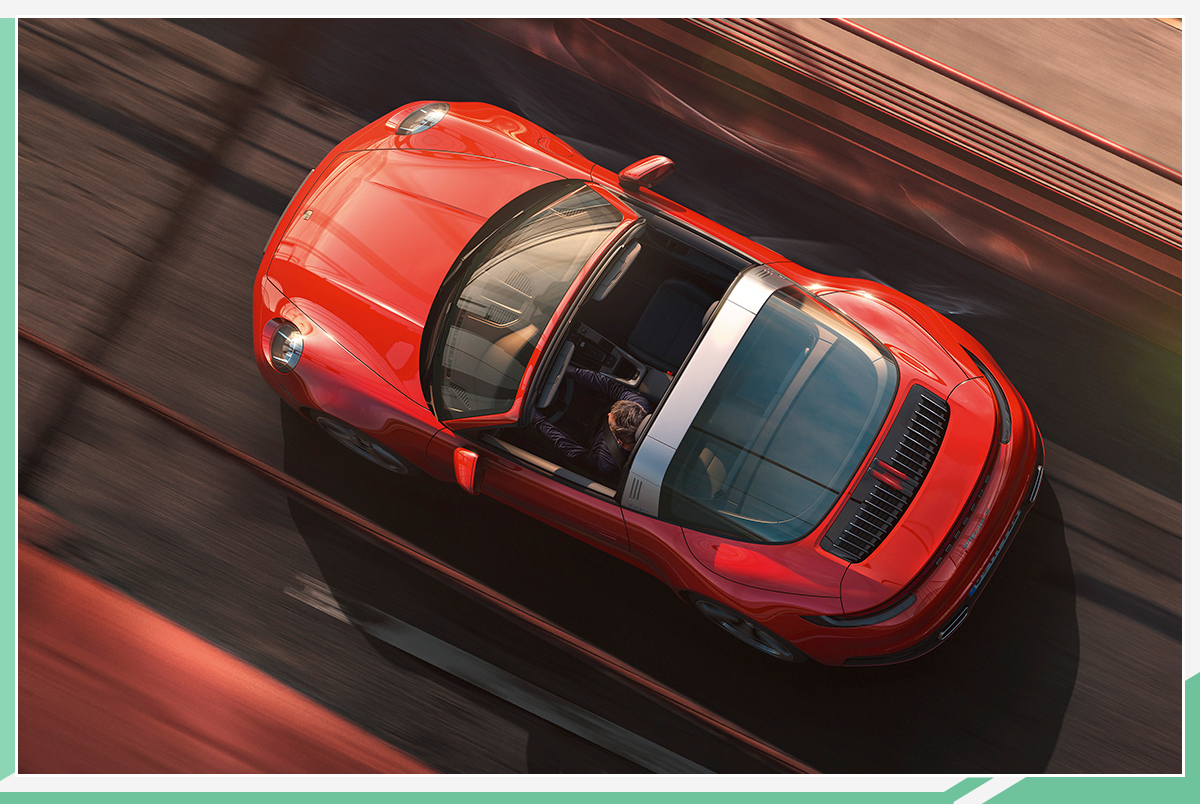
The new 911 Targa is powered by the new six-cylinder twin-turbo horizontally opposed (Boxer) engine used in the 911 Carrera model. The 911 Targa 4 has a maximum power of 283kW (385PS) and a peak torque of 450Nm. Combined with the optional Sport Chrono component, it only takes 4.2 seconds to accelerate from standstill to 100km/h, which is 0.1 seconds shorter than the previous model.
The 911 Targa 4S has a maximum power of 331kW (450PS) and peak torque of 530Nm. Combined with the Sport Chrono component, it only takes 3.6 seconds to accelerate from standstill to 100km/h, which is 0.4 seconds shorter than the previous model. The top speed of the 911 Targa 4 is 289km/h, and the 911 Targa 4S reaches 304 km/h. It is worth mentioning that the 911 Targa 4 and 911 Targa 4S are equipped with the new PDK 8-speed dual-clutch transmission for the first time.
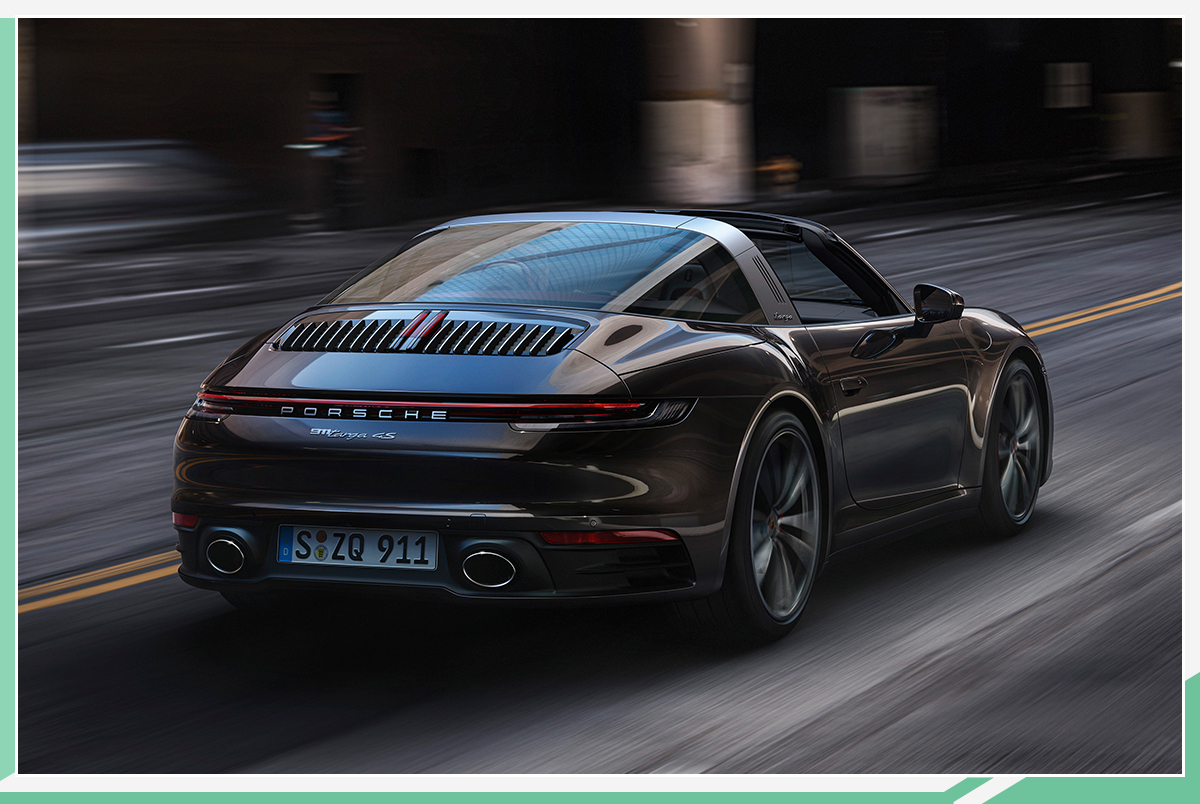
The new 911 Targa comes standard with PASM (Porsche Active Suspension Management) electronically-controlled variable shock absorption, which automatically adjusts the shock absorption characteristics to adapt driving comfort and handling to the corresponding driving situation, and offers both standard and sport manual adjustment modes. The rear axle fully variable electronically controlled differential lock includes Porsche Torque Guidance Plus (PTV Plus), the 911 Targa 4S is standard, and the 911 Targa 4 is optional.
Like the other eighth-generation Porsche 911 models, these two four-wheel-drive models also come standard with Porsche’s Wetland Mode. If sensors in the front wheel arches detect significant water on the road surface, they will send a signal in the instrument cluster, recommending that the driver manually switch to Wetland Mode. After that, the Porsche Stability Management System (PSM), Porsche Traction Control Management System (PTM) and drivetrain responsiveness will be adjusted to ensure maximum stability.
关于作者